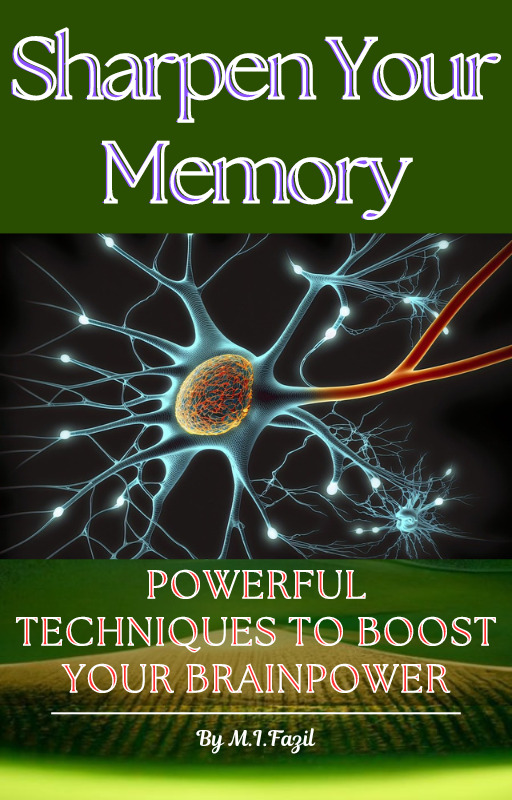#Memory Retention
Explore tagged Tumblr posts
Text

‘Memories r stinky’
A short comic by me based on a conversation I had with a friend about trying to remember our childhood or even things from a week ago. I made it in Like 10 minutes so thats why it’s kinda scribbly
But I also just like my art scribbly
#trauma#did system#did osdd#did community#mental health#mental illness#mentalheathawareness#memory#memory retention#memory repression#comic art#original comic#comics#mini comic#web comic#my comic#copperkudzueye#digital art#artists on tumblr#art
49 notes
·
View notes
Text
In psychology, this is known as the Dunning-Kruger effect.
Poor students lack insight into their own limitations – as they would have to know about the vast amount of knowledge out there to be able to see how little they know in comparison. That means that those who are not very good at something tend to be overly confident, while those who have made an effort tend to underestimate their abilities. Poor students also have no trouble finding a question to write about: they neither lack opinions nor the confidence that they have already thought them through. They also won’t have trouble finding confirming evidence in the literature as they usually lack both interest and skill to detect and think through disconfirming facts and arguments.
- How to Take Smart Notes (Sönke Ahrens)
#General Knowledge and Learning#Knowledge Management#Note-Taking Strategies#Learning Techniques#Cognitive Science#Self-Improvement#Effective Study Methods#Knowledge Retention#Deep Learning#Conceptual Understanding#Critical Thinking#Smart Notes and Writing#Smart Notes System#Zettelkasten Method#Note Organization#Linking Notes#Writing Workflow#Idea Generation#Writing Productivity#Academic Writing#Literature Review#Personal Knowledge Base#Psychology of Learning#Memory Retention#Spaced Repetition#Metacognition#Cognitive Bias#Intrinsic Motivation#Curiosity-Driven Learning#Growth Mindset
2 notes
·
View notes
Text
Depression stole my memory

I started with postpartum depression that didn’t get caught. I was lying to myself, and with my first child breastfed him, eating one meal a day, and lost 25lbs. I eventually, like 18 months later got a full neurological psychological exam by a neuropsychiatrist. I was depression and had adhd.
I chose to treat the adhd only for two or three years. I don’t barely remember my eldest child’s first two years of life.
It helped but wasn’t until a few months after my Mom passed away that I finally saw a Psychiatrist and got treated for Depression and anxiety. I’ve been on medication since and I will be for the rest of my life.
I was medicated while pregnant with my second and it was much better, easier than I felt with my first. I wasn’t so stressed or agitated when he got fussy and I remember it all, pretty much.
Want to know more about memory loss and depression? Click here to read about the science of it.
#it’s ok to take medication for the rest of your life#depression#anxiety#postpartum depression#memory loss#memory retention#depression treatment#adhd#adhd treatment
6 notes
·
View notes
Text
My brain likes to hold on to the most inane and random things. Every time I hear/see/say/think the phrase "years of practice," my brain plays a clip from Danny Phantom of Vlad (the evil dude with all of Danny's powers) saying that.
Meanwhile, I struggle to remember my SSN
movies where someone hears an important message only once and retains all the details….
girl if that were me, we’d be fucked. I have to reread emails like 4 times.
169K notes
·
View notes
Text
Innovative Methods for Memory Retention: Boost Recall
"Ready to remember everything? 🧠✨ Unlock your brain's potential with these innovative memory retention techniques! Say goodbye to forgetfulness and hello to amazing recall! 😂🔍 #MemoryRetention #BoostRecall #InnovativeMethods #BrainTraining #Cognitive
In our fast world, finding new ways to keep memories is key. I value memory a lot, for both personal and work life. Improving memory helps us learn better and remember more. Studies show that different ways to think can help us remember better. This makes it easier to learn new things every day. Recent studies link too much sugar to smaller brains and bad memory. Also, being overweight or…
#Boost Recall#Brain Training#Cognitive Health#Cognitive Methods#Innovative Techniques#Learning Strategies#Memory Enhancement#Memory Improvement#Memory Retention#Mental Performance
0 notes
Text
Color Psychology and the Impact on Learning Outcomes
Color psychology — the study of how color affects mood, emotions, and memory — has the potential to improve learning outcomes. Humanities students who studied color-coded course content remembered more of what they’d read as a result, a study published in Heliyon reveals. Red was the most effective color as it aided memory retention for 57% of students, whereas black was least effective (it helped only 20% of students). As humans are visual creatures, color impacts the way information is absorbed and retained. So, if you want to make your online courses as engaging, valuable, and effective as possible for students, customers, or employees, color psychology principles can do just that.
The science behind color psychology
Although the reasons behind why color influences mood, memory, and learning outcomes are varied, it largely comes down to the fact that sight is our strongest sense. “90% of information transmitted to the brain is visual”, MIT Sloan reveals. That means color has a huge impact on the brain’s visual neurons. When you see colors, different parts of the visual cortex light up in response to help you recognize and associate each individual color. So, as your brain is basically wired to remember colors, that’s ultimately why it's easier to remember information when it’s accompanied by color, far more so than it is to remember black and white text or spoken information.
Blue aids relaxation and focus
Colors like blue and green (peaceful shades found in nature) can reduce stress and anxiety and put you in a relaxed, focused state that’s conducive to learning. Blue, in particular, has been proven to improve performance in creative tasks, a study published by the American Association for the Advancement of Science (AAAS) reveals. This is likely because you often need to be in a calm and relaxed “flow state” in order to excel creatively — and blue can help get you there. Research from Lund University also echoes this research as blue was found to relieve stress and improve focus. Consequently, blue can help people perform tasks quickly and with greater accuracy.
Red stimulates cognitive function
Warm colors like red, yellow, and orange can boost alertness and cognitive function, which, in turn, aids memory retention. In fact, the AAAS research also found that red specifically improves how people perform on detail-oriented tasks. However, as red is such a bold color, it shouldn’t be used too much. The research also found that heavy usage of red overstimulates learners and causes them to get distracted.
Well-designed courses aid employee satisfaction and retention
When you consider that learning development is vital to employee satisfaction and retention, it’s all the more important to design your course well. Your ultimate aim is to help employees learn efficiently, so they can progress in their position with you. In fact, 48% of American workers would happily switch jobs if the new one offered skills development opportunities, which highlights the potential of upskilling to attract and retain employees. “If your employees feel that they’re growing and developing skills [that] suit their strengths and their career goals, they are going to be more satisfied and more likely to stay in their roles”, Amplify HR founder Karen Kirton explains.
Use color and contrast to increase focus
Fortunately, strategic use of color can engage employees and make your course more effective. So, for example, to use color to stimulate focus, highlight key parts of the text with different background colors to emphasize important points. This adds variety that breaks up the content and makes it easier for students to take in the most useful information. Be careful not to overdo it, though. Use color sparingly to prevent the course looking cluttered, otherwise it’ll confuse students and hamper productivity.
Also, consider how you use contrast: the difference between two color hues. Past research shows that when colors contrast, the eye is naturally drawn to them. So, choose a background color that opposes and contrasts nicely with the text to increase readability and retention.
Strategic color use is key if you want to create engaging and effective courses. As long as you follow color psychology principles, you’ll help students and employees better absorb and remember your content, so they achieve better learning outcomes.
Share in the comments below: Questions go here
#color psychology#visual creatures#learning outcomes#stress and anxiety#flow state#cognitive function#boost alertness#aids memory#memory retention#aids learning#employee satisfaction
0 notes
Text
Sharpen Your Memory | Powerful Techniques to Boost Your Brainpower |

Is your memory starting to feel foggy? Are you tired of forgetting names, appointments, or important details? It's time to unlock your brain's full potential!
"Sharpen Your Memory" provides you with a comprehensive toolkit to enhance your cognitive abilities and improve your memory. Discover proven strategies, practical exercises, and mind-boosting techniques that will help you:
• Retrain your brain: Learn how to create new neural pathways for optimal memory function.
• Master memory techniques: Explore effective methods like mnemonics, visualization, and association.
• Boost brainpower: Discover tips for improving focus, concentration, and overall cognitive health.
• Enhance your life: Experience the benefits of a sharper memory in your personal and professional life.
Don't let a fading memory hold you back. Take control of your cognitive abilities and unlock your true potential.
Whether you're a student, professional, or simply looking to maintain a sharp mind, this book offers the tools and knowledge you need to achieve optimal brainpower.
#memory improvement#brain power#enhance cognitive function#improve memory#brain health#mental clarity#brain training#cognitive enhancement#memory retention#mental health#boost memory#memory enhancement#memory
0 notes
Text
Harnessing the Power of Spaced Repetition for Enhanced Learning: A Guide for MaxLearn

In today’s fast-paced world, effective learning methods are crucial for both individuals and organizations. Traditional learning techniques often fall short in ensuring long-term retention of information. This is where the concept of spaced repetition comes into play, offering a scientifically-backed method to enhance memory and learning efficiency. For MaxLearn, integrating spaced repetition into training modules can revolutionize the learning experience, making it more effective and sustainable.
Understanding Spaced Repetition
Spaced repetition is a learning technique that involves increasing intervals of time between subsequent review of previously learned material. This method is based on the psychological spacing effect, which suggests that information is more easily recalled if study sessions are spaced out over time. Unlike cramming, spaced repetition takes advantage of the way our brains are wired to forget and remember, thus enhancing long-term retention of information.
The Science Behind Spaced Repetition
The efficacy of spaced repetition is grounded in cognitive science. When we first learn something new, the memory of it is initially fragile and prone to decay. However, by reviewing the information at strategically spaced intervals, we reinforce the memory, making it more durable and less likely to be forgotten. This process is known as the spacing effect, first identified by Hermann Ebbinghaus in the late 19th century.
Ebbinghaus’s forgetting curve illustrates how quickly we forget information after learning it. Without review, our ability to recall information diminishes rapidly. Spaced repetition counteracts this by refreshing our memory just as it begins to fade, thereby strengthening the neural connections associated with the learned material.
Benefits of Spaced Repetition for MaxLearn
For MaxLearn, incorporating spaced repetition into its training modules offers several key benefits:
1. Enhanced Long-Term Retention
Spaced repetition ensures that learners revisit material at optimal intervals, which reinforces their memory and enhances long-term retention. This means that employees or students are more likely to retain information over extended periods, reducing the need for frequent retraining.
2. Improved Learning Efficiency
By focusing on the timing of reviews rather than the quantity, spaced repetition maximizes learning efficiency. Learners spend less time reviewing material they already know well and more time on areas that need reinforcement. This targeted approach reduces overall study time while increasing retention rates.
3. Personalized Learning Experience
Spaced repetition algorithms can be tailored to individual learning needs. MaxLearn can leverage data on learner performance to adjust the timing of reviews for each user, ensuring a personalized and effective learning experience. This adaptability is particularly valuable in diverse learning environments where learners have varying levels of proficiency and retention capabilities.
4. Reduced Cognitive Load
Traditional learning methods often lead to cognitive overload, where learners are overwhelmed with too much information at once. Spaced repetition breaks down learning into manageable chunks, reducing cognitive load and making it easier for learners to absorb and retain information.
Implementing Spaced Repetition in MaxLearn
To successfully implement spaced repetition in MaxLearn’s training modules, several steps should be taken:
1. Integrate with Existing Content
Identify key learning objectives and integrate spaced repetition into the existing training content. This involves breaking down information into smaller, digestible chunks that can be reviewed at spaced intervals. For example, a comprehensive training module can be divided into several smaller lessons, each with its own review schedule.
2. Utilize Technology and Algorithms
Leverage technology to automate the spaced repetition process. MaxLearn can employ algorithms that track learner performance and adjust review intervals accordingly. These algorithms can analyze data such as quiz scores, time spent on modules, and accuracy of responses to determine the optimal spacing for each learner.
3. Incorporate Various Learning Materials
Spaced repetition is most effective when it involves diverse learning materials. MaxLearn can include videos, interactive quizzes, flashcards, and real-life scenarios to reinforce learning. This variety keeps learners engaged and caters to different learning styles.
4. Monitor and Adjust
Continuously monitor the effectiveness of spaced repetition through learner feedback and performance metrics. Make adjustments to the algorithm and content as needed to ensure optimal results. Regular assessments can help identify areas where learners may be struggling and require additional review.
Practical Application of Spaced Repetition
To illustrate the practical application of spaced repetition, consider the following example in a corporate training context:
Initial Training Session
During the initial training session, employees are introduced to a new software system. The session covers basic navigation, key features, and common tasks. At the end of the session, employees complete a short quiz to assess their understanding.
First Review (After One Day)
One day after the initial session, employees receive a brief review module. This module includes a summary of the key points covered in the initial session, along with a few interactive exercises to reinforce the material. A second quiz is administered to gauge retention.
Second Review (After One Week)
One week later, employees revisit the material in a more detailed review module. This module delves deeper into the software’s features and includes more complex exercises. Another quiz is given to assess progress.
Subsequent Reviews (At Increasing Intervals)
The reviews continue at increasing intervals—two weeks, one month, three months—each time focusing on different aspects of the software and incorporating new exercises and quizzes. These reviews ensure that employees retain the information and are able to apply it effectively in their work.
Measuring the Impact of Spaced Repetition
To evaluate the impact of spaced repetition, MaxLearn can track various metrics:
1. Quiz Scores
Regular quizzes can provide insight into how well learners are retaining information. Comparing quiz scores over time can highlight improvements in retention and areas that may need additional review.
2. Completion Rates
Tracking the completion rates of review modules can indicate learner engagement and the effectiveness of the spaced repetition schedule. High completion rates suggest that learners are finding the modules manageable and valuable.
3. Feedback Surveys
Collecting feedback from learners about their experience with spaced repetition can provide qualitative data on its effectiveness. Surveys can ask learners about their confidence in retaining information, the perceived usefulness of review modules, and any challenges they encountered.
4. Performance Metrics
For corporate training, tracking performance metrics related to the application of learned material can demonstrate the practical benefits of spaced repetition. This might include measuring productivity, accuracy, and efficiency in tasks related to the training content.
Conclusion
Spaced repetition is a powerful tool that can significantly enhance learning and memory retention. For MaxLearn, integrating this technique into training modules can lead to more effective and efficient learning experiences. By leveraging technology and personalized algorithms, MaxLearn can provide tailored, engaging, and impactful training that meets the needs of diverse learners. Embracing spaced repetition is not just a step forward in educational technology—it’s a strategic move towards sustainable and long-term success in learning and development.
#Spaced repetition#MaxLearn#Learning efficiency#Memory retention#Training modules#Cognitive science#Educational technology#Learning strategy#Long-term retention#Knowledge reinforcement
0 notes
Text
Maintaining cognitive health is vital for individuals receiving home care in Secane, Pennsylvania. A crucial aspect often overlooked is the impact of diet on brain function. The foods we consume significantly affect memory retention and cognitive abilities. By incorporating brain-boosting foods into daily meals, caregivers in Pennsylvania can support their loved one’s mental well-being and overall quality of life.
0 notes
Text
The Mandela Effect: A Fascinating Psychological Phenomenon

View On WordPress
#cognitive psychology#collective memory#confabulation#eyewitness testimony#false memories#Fiona Broome#historical records#human brain#human memory#Mandela Effect#memory formation#memory malleability#memory reconstruction#memory retention#Nelson Mandela#neuroscience#parallel universes#psychological phenomenon#psychology#social reinforcement
0 notes
Text
The role of preschool education in shaping young minds is paramount. One innovative approach gaining significant traction is bilingual education. Research indicates that bilingual classes not only contribute to linguistic proficiency but also play a crucial role in enhancing cognitive development among preschoolers.
0 notes
Text
does anyone else have moments where theyre thinking about something bad and then breathe a sigh of relief when they suddenly forget what they were thinking about?
0 notes
Text
Mind improvement ways encompass a variety of strategies and practices leveled at perfecting our capability to flash back and retain information. These ways work the authority of our brain's neuroplasticity and its capacity to acclimatize and form new connections.

One extensively honored fashion is mnemonic bias, which involve creating cooperations or internal images that aid in recalling information. By relating new information to familiar generalities or pictorial internal imagery, mnemonic bias make the substance more memorable. Another operative path is spaced reiteration, which involves reviewing information at gradationally adding intervals. This fashion takes advantage of the distance sequel, which suggests that regular and zonked- eschewal exposure to information strengthens long- tenure mind. also, regular physical exercise has been shown off to enhance mind and cognitive function by adding race inflow and promoting the excrescency of new neurons in the hippocampus, a brain region pivotal for mind conformation. Sleep plays a vital part in mind connection, and espousing good sleep fashions can significantly ameliorate mind. Research also suggests that ways like awareness and contemplation can enhance mind by reducing pressure situations and perfecting seat and concentration. Incipiently, engaging in mentally stimulating conditioning, similar as mystifications, reading, or mastering a new art, keeps the brain active and enhances mind capacity. By combining these ways and incorporating them into diurnal routines, individualities can witness significant advancements in their mind and cognitive capacities.

#memory#memory enhance#techniques#self development#productive mind#mind training#mind techniques#productivity#healthy lifestyle#mentally active#mindfullness#sufficent sleep#socially engaged#organize info#mnemonic#repeat & review#healthy diet#stay hydrated folks#memory retention#strategies#to-do list#social interaction#strong relationships#social activities#quality sleep#neutral connections#regular exercise#brain health#memory function#sharpen mind
1 note
·
View note
Link
Discover 10 simple methods for improving memory retention that you can apply to your life now. From practical techniques to powerful strategies, this insightful article provides game-changing insights to unlock your brain's full potential. Say goodbye to forgetfulness and start remembering like a pro today!
0 notes
Note
best boi fakey in 13...


dw he definitely got all that 👍hes got a good solid memory ☺️
Expression Challenge Post here !
#answered#arts#pizza tower#fake peppino#gustavo is rattling off phone orders rapidfire#and he thinks its so neat that peppi has the same Powerful Memory Retention as peppino#like MAYBE its built in....or maybe hes just really good at this kinda shit heehee#also. i drew him so goopy. he normally would not be this goopy when cooking (stress makes him melt and cooking does NOT stress him out)#but i wanted to make him look. waxy. hes not sticky or slimy hes like. candlewax melded into a shape. not literally but You Know
270 notes
·
View notes
Text
🫧 💭 — sycamari are naturally both v non confrontational & stubborn to the point it’s an issue in different ways ; the former means it takes substantially more effort than usual to pick the others brain & the latter ( not because they’re deliberately unwavering ) but because they’re so deeply passionate about their respective values and beliefs 🩵 their disagreements are perceived as a little dramatic because of this but they get better over time and with a joined focus on clearer communication 🙂↕️ 🙂↕️
#furthermore ->#in terms of support they balance each other w how au.gustine brings a more logical perspective while still being sensitive to her emotional#needs and marianne encourages him to feel what he needs to#+ further accommodates this with little reminders that no feelings are ‘ bad ‘ 🙂↕️#good morniii ⛅️ i haven’t slept yet but i sleep now ok n__n 🩵 ✨#it’s important for memory retention i thinkk
20 notes
·
View notes